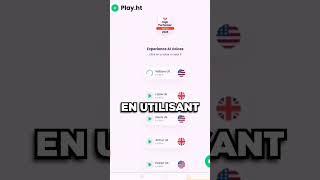If you’ve ever asked ChatGPT to help with academic tasks and felt frustrated by the results, this video is for you. I’ll walk you through the basics of prompt engineering, not just as a technical skill, but as a mindset shift for how we communicate with AI tools.
▼ ▽ Sign up for my FREE newsletter
Join 21,000+ email subscribers receiving the free tools and academic tips directly from me:
https://academiainsider.com/newsletter/
▼ ▽ MY TOP SELLING COURSE ▼ ▽
▶ Become a Master Academic Writer With AI using my course: https://academy.academiainsider.com/courses/ai-writing-course
When people ask “what is prompt engineering?”, the answer isn’t just about crafting longer prompts—it’s about learning how AI systems like ChatGPT interpret your instructions and respond based on patterns, not understanding. That means vague prompts often lead to vague outputs.
This isn’t your typical chatbot tutorial. Instead of just showing you where to click or how to open ChatGPT, I focus on how to think like the model—how to lay out the information it needs in the format that gets the best results. Whether you’re summarizing research papers, writing abstracts, or preparing content for different academic audiences, the way you word your request matters more than you might expect.
In this prompt engineering tutorial, I share a practical approach that’s helped me and many others save hours of work while improving the quality of AI-generated content. I’ll show you why just saying “write a thesis” or “summarize this paper” won’t cut it—and how using clearer, more targeted instructions can lead to outputs that are more useful, more accurate, and tailored for your audience.
This video also explores how you can experiment with tone, structure, and even formatting by adding simple cues to your ChatGPT prompt. Whether you're asking the model to act like a peer-reviewed journal editor or explain quantum entanglement to a high school student, your results depend on how clearly you communicate your intent.
By the end, you’ll understand the core ideas behind AI prompt engineering and how to apply them in your own academic workflow. It’s not about learning code or becoming an expert—it’s about small changes that lead to big improvements.
................................................
▼ ▽ TIMESTAMPS
00:00 Intro
00:56 Being Specific on AI Prompts
01:54 Giving AI a target audience
02:42 Give it an output
03:34 Giving AI a role
04:30 Give it Constraints
05:29 Writing down steps
06:32 Setting the Right Tone with AI
07:58 Giving Examples to AI
09:03 Get AI to Prompt for you
09:51 Super Bonus Tip
10:55 Outro
...............................................
▼ ▽ Socials for shorts and reels
Instagram: https://www.instagram.com/drandystapleton/
TikTok: https://www.tiktok.com/@drandystapleton
▼ ▽ Sign up for my FREE newsletter
Join 21,000+ email subscribers receiving the free tools and academic tips directly from me:
https://academiainsider.com/newsletter/
▼ ▽ MY TOP SELLING COURSE ▼ ▽
▶ Become a Master Academic Writer With AI using my course: https://academy.academiainsider.com/courses/ai-writing-course
When people ask “what is prompt engineering?”, the answer isn’t just about crafting longer prompts—it’s about learning how AI systems like ChatGPT interpret your instructions and respond based on patterns, not understanding. That means vague prompts often lead to vague outputs.
This isn’t your typical chatbot tutorial. Instead of just showing you where to click or how to open ChatGPT, I focus on how to think like the model—how to lay out the information it needs in the format that gets the best results. Whether you’re summarizing research papers, writing abstracts, or preparing content for different academic audiences, the way you word your request matters more than you might expect.
In this prompt engineering tutorial, I share a practical approach that’s helped me and many others save hours of work while improving the quality of AI-generated content. I’ll show you why just saying “write a thesis” or “summarize this paper” won’t cut it—and how using clearer, more targeted instructions can lead to outputs that are more useful, more accurate, and tailored for your audience.
This video also explores how you can experiment with tone, structure, and even formatting by adding simple cues to your ChatGPT prompt. Whether you're asking the model to act like a peer-reviewed journal editor or explain quantum entanglement to a high school student, your results depend on how clearly you communicate your intent.
By the end, you’ll understand the core ideas behind AI prompt engineering and how to apply them in your own academic workflow. It’s not about learning code or becoming an expert—it’s about small changes that lead to big improvements.
................................................
▼ ▽ TIMESTAMPS
00:00 Intro
00:56 Being Specific on AI Prompts
01:54 Giving AI a target audience
02:42 Give it an output
03:34 Giving AI a role
04:30 Give it Constraints
05:29 Writing down steps
06:32 Setting the Right Tone with AI
07:58 Giving Examples to AI
09:03 Get AI to Prompt for you
09:51 Super Bonus Tip
10:55 Outro
...............................................
▼ ▽ Socials for shorts and reels
Instagram: https://www.instagram.com/drandystapleton/
TikTok: https://www.tiktok.com/@drandystapleton
- Catégories
- prompts ia














Commentaires